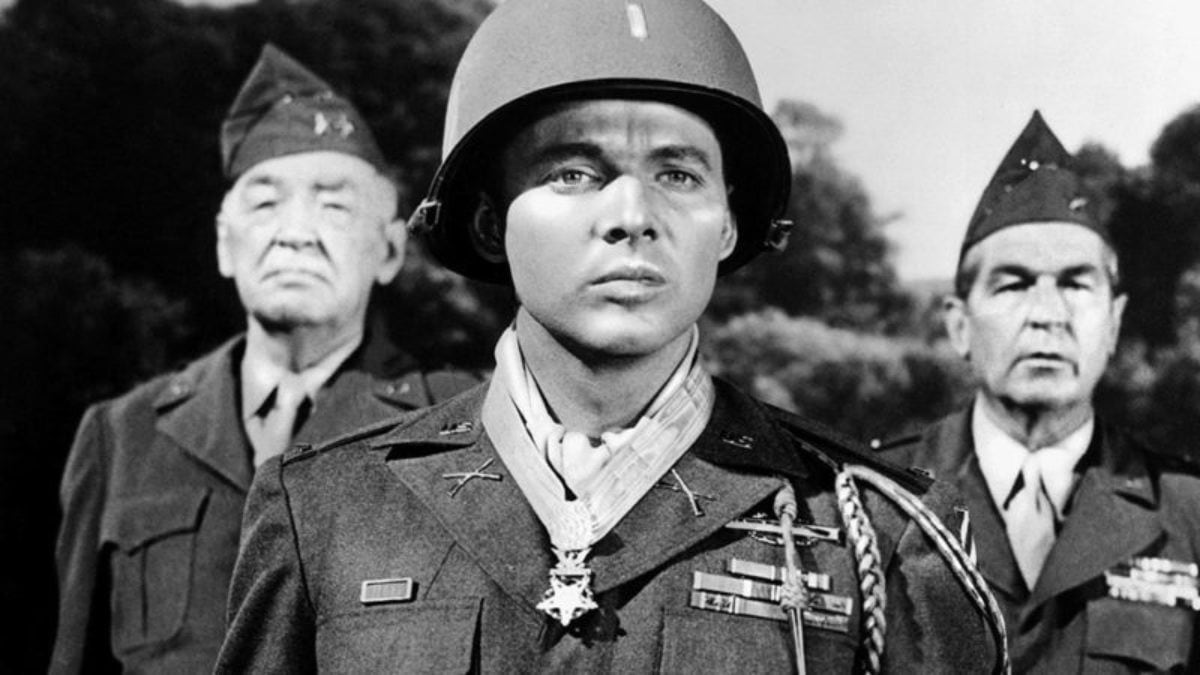By the time the United States entered World War II, its Army had adopted three forms of tracked armored fighting vehicles.
The light tank was primarily a small, fast, agile reconnaissance specialist, while the standard medium tank was primarily for supporting the infantry, capable of fighting an enemy counterpart if necessary.
Under normal circumstances, the job of engaging enemy tanks was handled by the tank destroyer, or TD, which carried a more powerful high-velocity cannon than that of a medium tank within a 360-degree rotating turret that dispensed with an armored roof. In theory, the TD sacrificed armor protection for speed and firepower, wielded by aggressive crews.
In practice, however, war does not cooperate, and the Army’s tank types often found themselves in circumstances for which their specialties were not appropriate, necessitating their crewmen to make do with what they had.
RELATED
Staff Sgt. Clyde L. Choate found himself in just such a situation on Oct. 25, 1944. As a tank destroyer commander without a tank destroyer, he had to do some exceptional improvisation under fire.
Choate was born in North Frankfort, Illinois, one of 12 children born to coal miner James Isaac Choate and Grace Ellen Brown. While living in Anna and attending Anna-Jonesboro High School, Clyde also worked as a farmer. When war broke out, he enlisted in the Army and was ultimately assigned to Company C of the 601st Tank Destroyer Battalion, a unit reorganized from Company D, 5th Field Artillery, the Army’s oldest unit, dating to the Revolutionary War. Its primary weapon was the M10, essentially an M4 Sherman chassis with a high velocity 75mm gun in a relatively lightly armored turret and hull.
Choate spent 31 months in North Africa, Sicily, Italy and France, during which he was awarded the Silver Star, Bronze Star and Purple Heart. With the 601st TD Battalion attached to the 3rd Infantry Division, he took part in Operation Dragoon, the Allied invasion of southern France on Aug. 15, 1944, and his career climaxed on Oct. 25, as the 3rd Infantry Division advanced through the Rambervillers Forest to secure the town of Bruyères.
Facing the 3rd Division were elements of the German 16th Division, which launched a counterattack in the area where Choate’s M10 — and the infantry for whom he was the only available armor — came under attack by a roughly equal force of German infantry and one Panzerkampfwagen Mark IV. The German equivalent of the M4 Sherman, the Panzer IV’s main armament had evolved from a short 75mm gun for infantry support to a true battle tank with a longer 75 capable of knocking out an American M4 or a Soviet T-34.
What amounted, then, to a head-on duel was described in Choate’s citation describing what followed:
“Our infantry occupied a position on a wooden hill when, at dusk, an enemy Mark IV tank and a company of infantry attacked, threatening to overrun the American position and capture a command post 400 yards to the rear. S/Sgt. Choate’s tank destroyer, the only weapon available to oppose the German armor, was set afire by 2 hits.
“Ordering his men to abandon the destroyer, S/Sgt. Choate reached comparative safety. He returned to the burning tank destroyer to search for comrades possibly trapped in the vehicle risking instant death in an explosion which was imminent and braving enemy fire which ripped his jacket and tore the helmet from his head. Completing the search and seeing the tank and its supporting infantry overrunning our infantry in their shallow foxholes, he secured a bazooka and ran after the tank, dodging from tree to tree and passing through the enemy’s loose skirmish line. He fired a rocket from a distance of 20 yards, immobilizing the tank but leaving it able to spray the area with cannon and machinegun fire.
“Running against a hail of machinegun and small arms fire he secured another rocket, and, advancing against a hail of machinegun and small arms fire reached a position 10 yards from the tank. His second shot shattered the turret. With his pistol he killed 2 of the crew as they emerged from the tank, and then running to the crippled Mark IV while enemy infantry sniped at him, he dropped a grenade inside and completed its destruction. With their armor gone, the enemy infantry became disorganized and was driven back.”
RELATED

Although the Germans got in the first hits, Choate refused to accept defeat, finding the means to turn the tables on his opponents. In so doing, his citation added, he “prevented the capture of the battalion outpost and turned a probable defeat into a tactical success.” Choate was offered a battlefield commission but turned it down.
On Aug. 23, 1945, Choate went to the White House to receive the Medal of Honor from President Harry Truman, during which he said he did not deserve it, and that it should have gone to all of the 601st TD Battalion.
During their conversation, Truman also suggested that he should give politics a try. Choate took him up on it, and from 1946 to 1977, he served as a Democratic state representative in the Illinois House of Representatives, including alternating stints as the House majority and House minority leader.
Although Choate was reelected handily in 1976, he announced that he would step down and on Jan. 8, 1977, the Illinois State Board of Elections appointed a successor.
After his retirement from elected office, Choate served as director of external affairs for Southern Illinois. Meanwhile, in 1947, he had married Mabel Madonna Ross, who bore two daughters.
On Oct. 10, 2001, Choate died in Carbondale at age 81 of congestive heart failure. He is buried at Anna Cemetery.
Read the full article here
